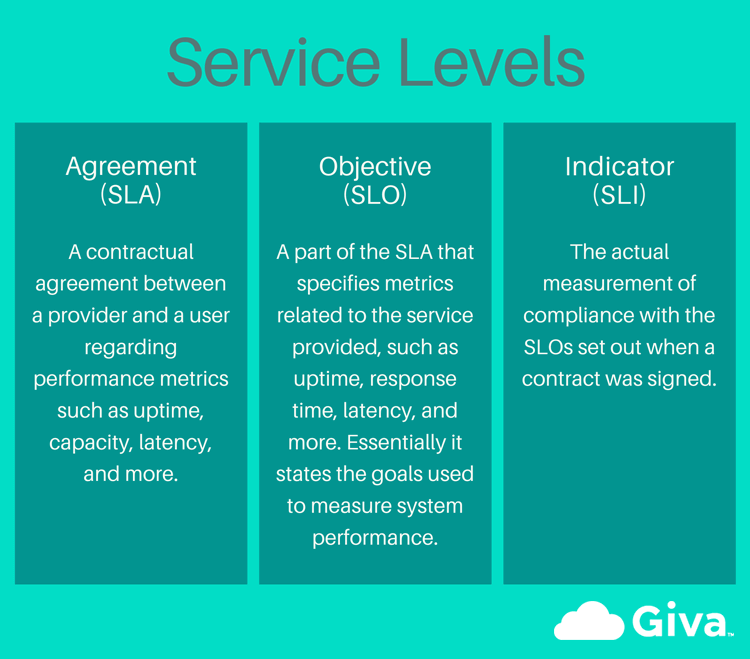In the rapidly evolving world of IT and software development, it is crucial to meet user expectations while ensuring that performance runs smoothly at all times. Central to discussions on performance metrics are two acronyms: SLO, meaning Service Level Objective and SLA, standing for Service Level Agreement.
Nevertheless, the lines between these two terms might not always be distinct and a lot of organisations struggle to debate what they mean or how different they are from each other.
Understanding the Performance Realms
To find out What is SLO vs. SLA, it is important to understand the difference between them and what their individual uses are. A detailed analysis always helps in making the right decision.
Service Level Objective (SLO)
A Service Level Objective (SLO) is a quantifiable goal that determines the acceptable standard of performance for each service. It is one of the key performance indicators used by companies to measure how well their services perform and address client expectations. SLOs are usually made as a percentage that reflects the required level of reliability or availability over time.
For instance, an SLO for a web service could be written as 99. % availability over a month. Thus, the service should work and be available for users 99.9% of the time during that period.
First of all, SLOs are aimed at establishing internal targets for performance that meet user expectations. They offer a clear, quantifiable means for measuring the reliability of any service and assist teams in identifying where they may need to target their efforts so that these performance objectives are maintained or even surpassed.
Service Level Agreement (SLA)
On the other side, a Service Level Agreement SLA is an official, legally enforceable agreement between the service provider and the customer. A service level agreement outlines the expected responsibilities, commitments and performance issues regarding services . While SLOs are usually used for internal purposes to instruct teams, SLAs define the terms and conditions in case of failure by a service provider if it does not deliver expected performance levels.
The details that SLAs normally encompass include response times, resolution times and penalties for breaches. They provide a platform upon which service providers and their customers can build trust, where there is accountability and transparency.
The Duality Dilemma
It is often confused with the fact that both SLOs and SLAs involve defining performance expectations. But the major difference is related to their purpose and audience.
SLOs are self-reflective objectives that help teams measure and improve the performance of their services. These empower organisations to change and innovate continuously, without any pressure from the outside world.
On the other hand, SLAs are outward-looking contracts that define a baseline for customer expectations. Although they may occasionally talk about internal SLOs, the main thing is to develop trust and ensure accountability with customers.
Alternatives in this Performance Realm
PagerDuty has often been used as the preferred solution to deal with performance management and monitoring in many organisations. However, the changing terrain and peculiar requirements of various organisations have led to many alternatives and rivals. Let us have a look at the Top 10 PagerDuty alternatives and competitors.
1. Zenduty
Zenduty offers a robust incident response platform with advanced automation and collaboration features. It acts as a new efficient solution for organisations aiming to improve their incident resolution processes with its easy-to-operate interface, intelligent alerting, and cost-effective pricing.
2. VictorOps
Emphasises incident management and real-time collaboration. It facilitates effective communication during emergencies.
3. New Relic
Comprehensive monitoring and observability platform. It provides information about application and infrastructure performance.
4. Datadog:
A multi-featured cloud monitoring platform. Allows organisations to track, diagnose and enhance their infrastructure.
5. Zenoss
Provides a single monitoring and AIOps system. Real-time insights into the performance of IT environments.
6. Opsmatic
Monitors and tracks change. It helps organisations know and handle changes according to their infrastructure.
7. LogicMonitor
A performance monitoring platform based on SaaS. Provides complete visibility into IT infrastructure and applications.
8. BigPanda
Automates event correlation and incidents. Reduces the alert noise and improves incident management.
9. SolarWinds
IT management and monitoring tools suite. Provides network, system and application monitoring solutions.
10. Raygun
Offers application performance monitoring and crash reporting. It helps developers detect problems that degrade the user experience.
To choose the correct alternative, one would need to consider specific organisational needs, the complexity of the infrastructure and how customised they want it.
In the performance metrics domain, it is essential for organisations striving to provide stellar services to appreciate the differences between SLOs and SLAs. SLOs function as internal milestones that promote a culture of ongoing enhancement, whereas SLAs are outer promises outlined as agreements for its clients’ terms and conditions.
As businesses navigate the complexity of performance management, it requires exploring alternative solutions to popular options such as PagerDuty. The top 10 listed above offer various features and capabilities that address the changing needs of today’s IT environments. Finally, the decision to choose SLO over.



